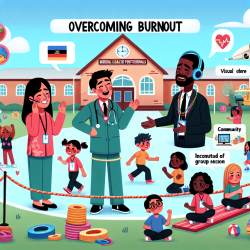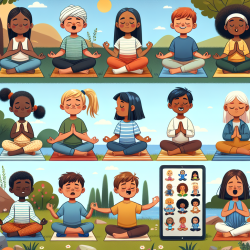Introduction
In the evolving landscape of education, the need for a pedagogical approach that embraces uncertainty and vulnerability is more critical than ever. The research article "Holding Space for Uncertainty and Vulnerability: Reclaiming Humanity in Teacher Education through Contemplative | Equity Pedagogy" offers valuable insights into how educators can transform their teaching practices by integrating contemplative and equity-focused methodologies. This blog post explores how practitioners, especially those involved in special education and online therapy services, can enhance their skills by implementing these research findings.
The Essence of Contemplative Pedagogy
Contemplative pedagogy emphasizes mindfulness, reflection, and the development of an equitable learning environment. It encourages educators to focus on process orientation, reflective journaling, and event-oriented inquiry. By doing so, teachers can foster an environment of trust, communication, and relationship-building, which are essential for centering equity in education.
Implementing Reflective Practices
Reflective journaling is a cornerstone of contemplative pedagogy. It allows educators to engage in "mindful reflection," where they can connect their internal world with classroom dynamics. Practitioners can benefit from this by regularly documenting their experiences, emotions, and biases, thereby gaining insights into their teaching practices and how they affect student engagement and learning.
Creating an Inclusive Classroom Environment
Equity in education requires acknowledging and addressing the diverse needs of students. The research highlights the importance of understanding students' lived experiences, especially in the context of racial and socioeconomic disparities. Educators can implement strategies that promote inclusivity, such as using heuristics to equalize participation and creating safe spaces for students to express themselves.
Adapting to Remote Learning Challenges
The transition to remote learning during the COVID-19 pandemic presented unique challenges. The research underscores the importance of maintaining a sense of routine and stability for students. Educators can adopt practices such as emotional check-ins and guided breathing exercises to help students manage stress and maintain focus in a virtual learning environment.
Encouraging Further Research
While the research provides a robust framework for enhancing teacher education, it also opens avenues for further exploration. Educators are encouraged to delve deeper into the nuances of contemplative pedagogy and its impact on diverse student populations. By doing so, they can contribute to the ongoing discourse on equity and mindfulness in education.
Conclusion
Incorporating contemplative and equity-focused practices into teacher education can lead to transformative outcomes for both educators and students. By embracing uncertainty and vulnerability, educators can create a more inclusive and supportive learning environment. For those interested in exploring these concepts further, the original research paper offers a comprehensive guide to implementing these methodologies.
To read the original research paper, please follow this link: Holding space for uncertainty and vulnerability: reclaiming humanity in teacher education through contemplative | equity pedagogy.










